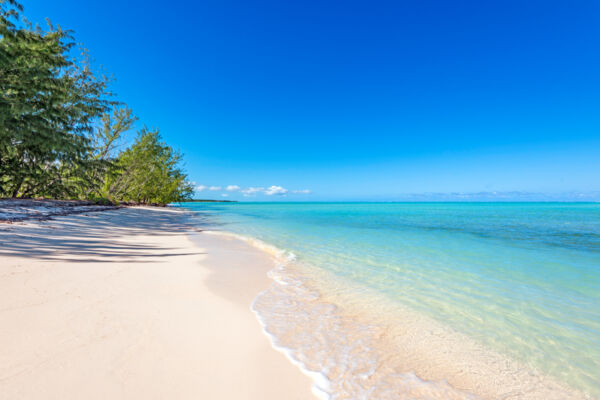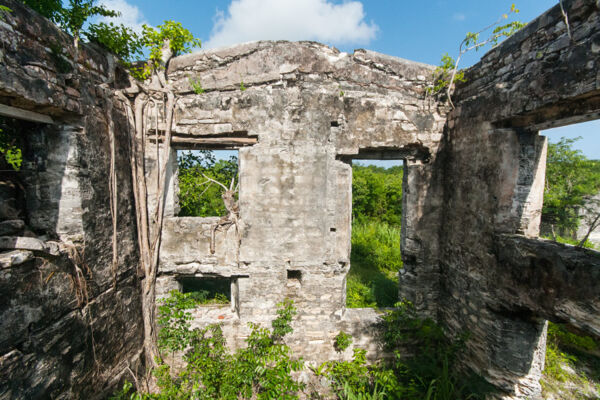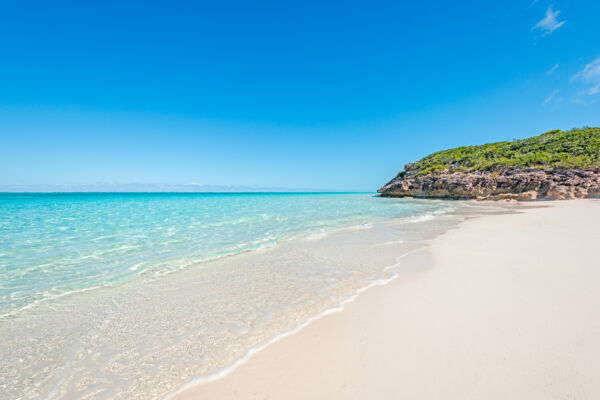The Twin Islands North and Middle Caicos

The two verdant islands of North Caicos and Middle Caicos are found in the center of the Caicos Islands archipelago, and collectively make up most of the landmass in the Turks and Caicos. A 1-mile-long (1.6 km) causeway connects the two islands, so they largely function as one.
North Caicos and Middle Caicos were once the home of agriculture in the Turks and Caicos, and the overgrown ruins of extensive cotton and sisal plantations can still be explored today. The tradition of farming continues, albeit on a smaller scale, with local farms producing tomatoes, cucumbers, peppers, melons, bananas, sugarcane, and papayas.
North Caicos and Middle Caicos have remained relatively quiet places to this day. Together, they are home to fewer than 2,000 people.
There are no mega-resorts, big shopping plazas, or large developments to distract you from the endless natural beauty. In their place are a few small hotels, quaint restaurants, and truly tranquil natural attractions.
Things to Do
North Caicos and Middle Caicos are the perfect tourism destination for visitors seeking adventure and the great outdoors. Miles of beautiful secluded beaches and rugged ocean cliffs line their north coasts. While spectacular Mudjin Harbour and Bambarra Beach are the most famous of these inspiring coasts, there are many other beaches to discover. The kayaking and stand-up paddleboarding are unparalleled, and the hiking here is arguably the best in the country.
Several interesting sites are found inland, including the 255-foot-deep (78 m) Cottage Pond Blue Hole, the open gallery Indian Cave, and the impressive Conch Bar Caves (the largest non-submerged cave system in the Bahamas–Turks and Caicos archipelago). Flamingo Pond Overlook on North Caicos is one of the best places in the country to see flamingos, and it’s common to see hundreds in the distance from the overlook.
A day trip to North and Middle Caicos is a popular and recommended activity for Providenciales visitors. This is a great way to see the sights and beaches without needing to stay overnight. If you would rather take a guided tour, several businesses offer organized excursions.
Exploring North and Middle Caicos

A vehicle is required to explore the islands, and several car rental companies offer a range of vehicle types for hire. Taxis, though expensive, are also available.
It's possible to see the best of what both islands have to offer on the typical day trip, from the Conch Bar Caves on Middle Caicos to Wade's Green Plantation on North Caicos. While the remote northeastern end of Middle Caicos is a great place to explore, be careful not to get your rental vehicle stuck or broken down. The walk to the nearest settlement from beautiful Cedar Point Beach is over 7 miles (11 km).
North Caicos, and to a greater extent Middle Caicos, has a small population and limited infrastructure. There are no operational gas stations on Middle Caicos, so it's important to ensure you have plenty of drinking water and sufficient fuel (half a tank will usually do) before leaving the settlement of Bottle Creek on North Caicos and continuing onwards to Middle Caicos.
The main settlements on North Caicos are Bottle Creek, Whitby, and Kew. The primary Middle Caicos settlements are Conch Bar and Bambarra.
You can get to North Caicos and Middle Caicos from Providenciales by ferry, domestic flight, or private boat. Most visitors take the North Caicos Ferry that travels between Providenciales and North Caicos several times per day.
Weather and Climate
Both islands experience more rainfall than the other main islands in the country. As such, the mosquitoes can be quite bad at times.
Temperatures on North Caicos and Middle Caicos are typically quite high (especially during the summer). You’ll want to have sunscreen and plenty to drink.
North Caicos and Middle Caicos History

The first recorded inhabitants of these two islands were the Taínos (or Lucayans), an Amerindian people who are thought to have migrated from South America up through the Caribbean around 700 AD. Middle Caicos was an important site to the Lucayans—the famous 1900s anthropologist Theodoor de Booy concluded that Middle Caicos and adjacent East Caicos likely supported the largest Taíno populations in the region.
Unfortunately, very little evidence remains from these peoples. Various artifacts were uncovered during guano (bat manure) mining in Conch Bar Caves in the 1800s, but the majority of these items have been lost. More recently, archaeological digs in Indian Cave and at remote sites on the south of Middle Caicos have turned up small bits of pottery and tools. However, collectively, there is very little to paint a picture of the life of these people.
The archaeological digs in Indian Cave also revealed bones from unique land animals, including a giant iguana, a large type of tortoise, and a large rodent. It’s believed that the Lucayans hunted these animals to extinction.

After the arrival of the Spanish in the region at the end of the 1400s, the Lucayan populations rather quickly disappeared due to slavery and disease. The islands remained largely uninhabited from the early 1500s until the British colonial plantation days.
As the American Revolution came to a close in 1783, displaced Loyalists from the former American Colonies began to look for new homes and petitioned the British Crown for land. Several were granted tracts of land in the budding Turks and Caicos Islands and began constructing plantations.
Initially, these agricultural attempts yielded promising returns, and sea island cotton from the Caicos Islands was said to be second to none. However, once the surrounding small rocks and protective surface layers of decaying leaves were removed from the fields, the rich black soil of the interior Caicos Islands became highly susceptible to erosion. When the inevitable drought or flood came along, the limited and precious soil was gradually blown or washed away.
The lack of distinct seasons also allowed insect pests and diseases to take hold. As time passed, it became too difficult to eke out an existence producing the export cotton and sisal crops.

Planting never completely died out on North Caicos and Middle Caicos, but the days of the large and organized plantations ceased by the mid-1800s.
Many of the field walls and remains of the great houses from these plantations are still hidden in the low and dense vegetation. Wade’s Green Plantation on North Caicos and Haulover Plantation on Middle Caicos are the only sites that have seen some limited clearing and that are accessible.
After the cotton and sisal era ended, both islands saw a decline in population as inhabitants began to leave for the better prospects of Grand Turk, South Caicos, and the Bahamas.
Tourism (though very limited) is now the primary industry on North Caicos and Middle Caicos. New accommodations and vacation rental homes are being built across both islands, and there is increasing interest in North Caicos real estate and Middle Caicos real estate.






